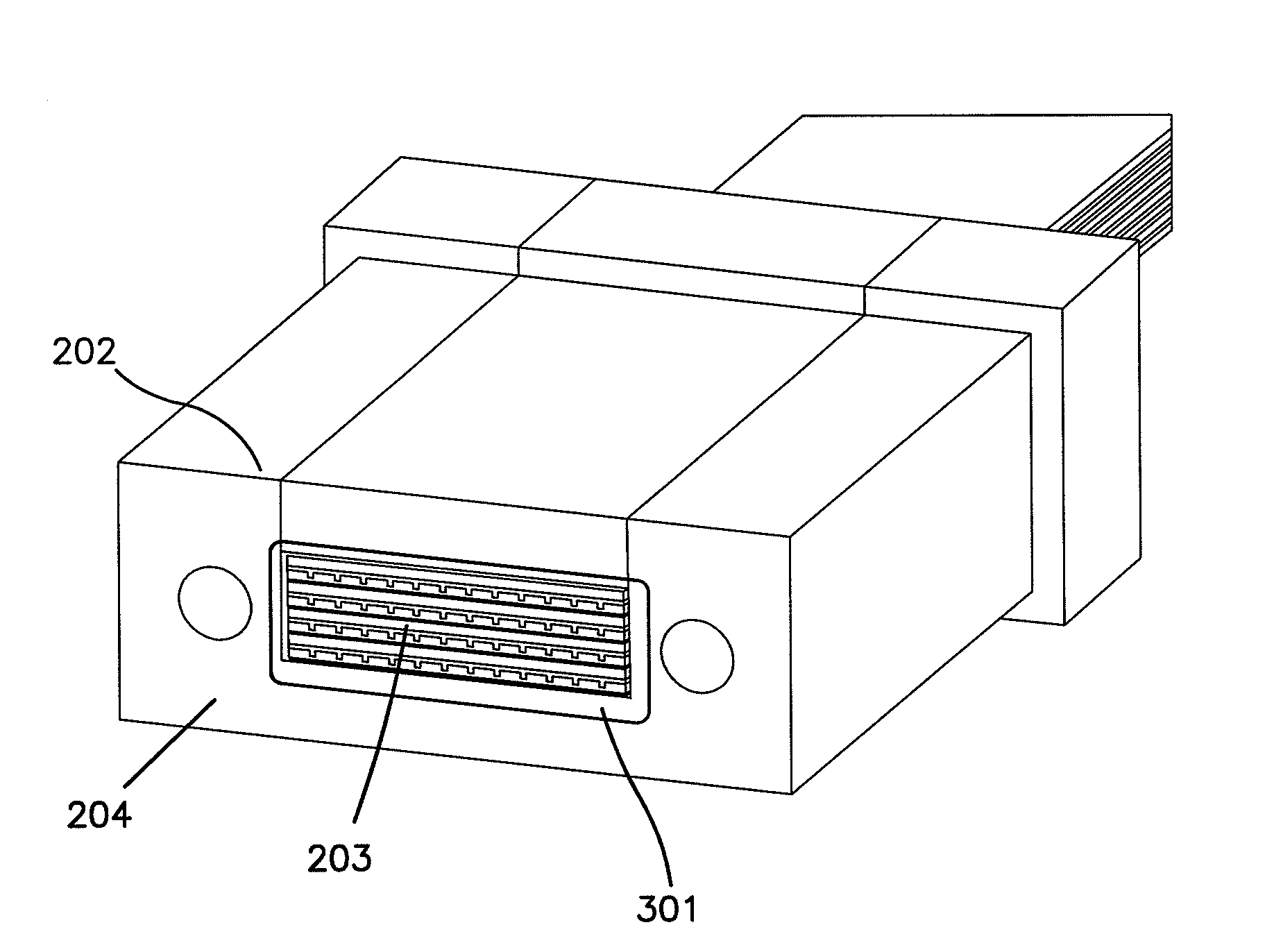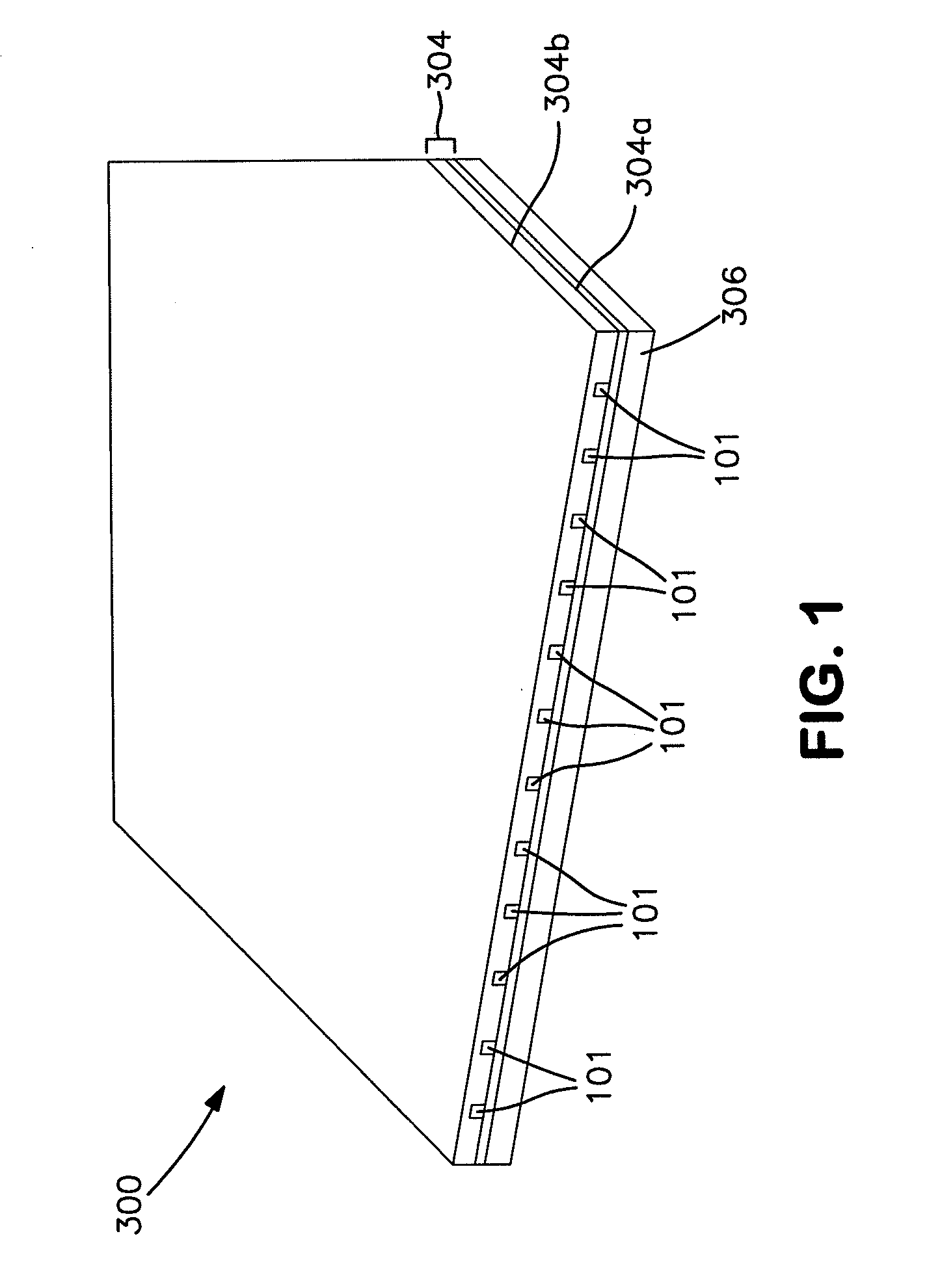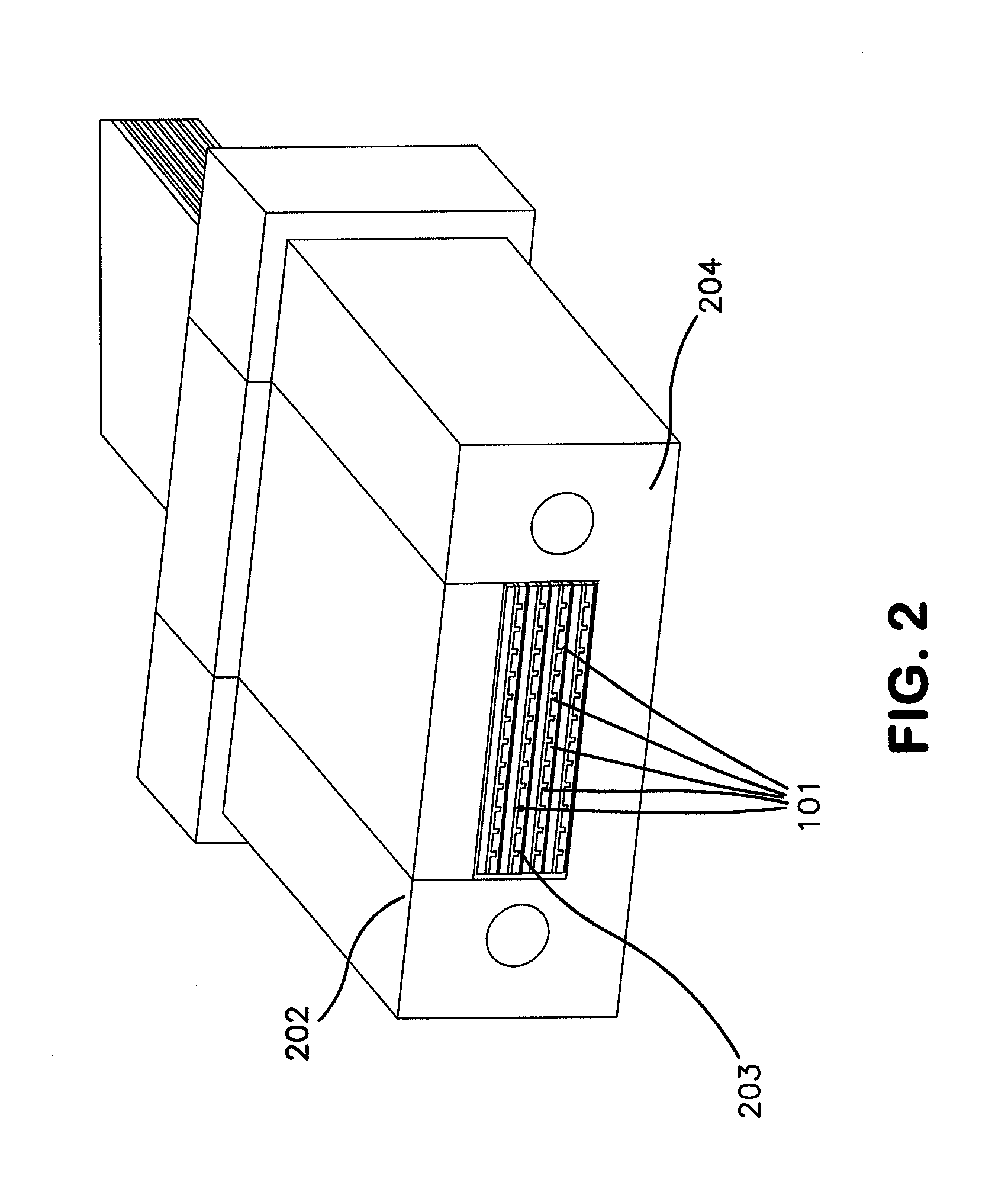Optical connector
- Summary
- Abstract
- Description
- Claims
- Application Information
AI Technical Summary
Benefits of technology
Problems solved by technology
Method used
Image
Examples
Embodiment Construction
[0015]FIG. 1 is a breakaway view of an exemplary layer 300 of polymer optical waveguides such as might form the optical transports in an optical cable terminated by an optical connector. It comprises twelve parallel optical waveguides 101 embedded in planar cladding 304 supported on a polymer mechanical support layer 306. Waveguides typically are manufactured in a planar manner using epitaxial layer processes commonly associated with printed circuit board and semiconductor fabrication. For instance, a first layer 304a of cladding is deposited on top of a mechanical support substrate 306. Then, using conventional photolithography techniques, a plurality of strips of waveguide core material is deposited on top of the first cladding layer 304a to form the waveguides 101. For example, a layer of photoresist is deposited over the first cladding layer 304a and the photoresist is developed through a photolithography mask corresponding to the desired pattern of the waveguides 101 (typically...
PUM
 Login to View More
Login to View More Abstract
Description
Claims
Application Information
 Login to View More
Login to View More - R&D
- Intellectual Property
- Life Sciences
- Materials
- Tech Scout
- Unparalleled Data Quality
- Higher Quality Content
- 60% Fewer Hallucinations
Browse by: Latest US Patents, China's latest patents, Technical Efficacy Thesaurus, Application Domain, Technology Topic, Popular Technical Reports.
© 2025 PatSnap. All rights reserved.Legal|Privacy policy|Modern Slavery Act Transparency Statement|Sitemap|About US| Contact US: help@patsnap.com



